Teaching: CIID Summer School
A couple of weeks ago, I had the pleasure of returning to Copenhagen and teaching a course on the CIID Summer School, together with Ré Dubhthaigh: “Service Design through the Lenses of Context and Scale.”
A bit of a mouthful of a title, that’s for sure, but good fodder for a week of digging into service design with some great students. We wanted to create a more reflective class than a straightforward transfer of knowledge of processes and methods and tools, which so many service design classes tend to be – more discussion and debate than usual, mixed in with the requisite doing and making. A critical perspective on a topic that can easily turn into either empty handwaving or blind cheerleading.
We defined service design as the practice of bringing together people, information, products and spaces to create holistic experiences across channels and touchpoints, and orchestrating many moving parts to ensure they feel like a single whole. Lenses we described as interchangable, allowing us to try on different ways of seeing things and seeing different parts in focus.
That brought up topics of discussion such as prototyping, communication, thinking to make and making to think, as well as the value of “process” and tools.
But the real anchors of the course were the lenses themselves: Context and Scale.
Services have contexts in which they are used – from people’s everyday lives to physical spaces, including public space and the city. But they also have contexts in which they are designed and delivered – organisations, structures, policy and legislation.
The flip-side of that coin is, of course, scale. Services, and their multitude of contexts, can be considered at a range of scales, and it’s often helpful to keep them in your mind’s eye at the same time, with each view exposing a different facet. Here, we were considering the micro and the macro; tactics and strategy; private and public; from details, craft, and moments to the big picture; network effects and consequences.

In many ways, we were exploring what Eliel Saarinen’s oft-quoted maxim means in 2014, when the definition of a “thing” is not quite as clear cut as it was in the first half of the 20th Century:
Always design a thing by considering it in its next larger context – a chair in a room, a room in a house, a house in an environment, an environment in a city plan.
As an aside, that quote turns out to be really difficult to find an original reference for. The best I could do was a Time Magazine profile of Eliel from July 1956, “From his father Eero learned two lessons he never forgot. One: ‘always des…'” (“The Maturing Modern. Time, 0040781X, 7/2/1956, Vol. 68, Issue 1” full quote original source )

Charles and Ray Eames: The Powers of Ten

William Whyte: The Social Life of Small Urban Places
With the Eames’s Powers of Ten and Holly Whyte’s Social Life of Small Urban Places (on Youtube) bouncing around our heads, we dove headlong into a week of discussion, research around Copenhagen and with local residents, exercises in the studio, and a brief to tie it all together.
For the last two days, we set the students a brief to design a service that responds to the imminent arrival of a new station as part of the expansion of Copenhagen’s Metro station. We were excited to see them head out into the city, to entirely different neighborhoods: from a wealthy part of central Copenhagen, Gammel Strand, to the immigrant neighborhood of Nørrebro, to the rapidly gentrifying formers worker’s quarter and red light district Vesterbro – where, to our surprise, one group decided to interview a group of alcoholics who had for years been based in a park that was in the process of being displaced by a new station. Each group tacked an entirely different set of issues, and designed services for the specific contexts they had chosen, all the while considering the impacts at every level, for a range of actors.
Throughout the week, we drew heavily on the work of others, and as I had done last time I taught at CIID, I compiled a newspaper with reading related to the themes of the class. Each piece had key phrases and paragraphs highlighted, adding a layer of editorial point of view to the original texts. I produced it with Newspaper Club in the UK, who printed and shipped it to the Denmark prior to our arrival.
As I wrote in 2011:
The very fact of having a physical artefact, laying around on the desks in the studio, is a constant reminder that there is related reading to be done, and it invites browsing in a way a list of links or open tabs does not. It also has the advantage of being print — there’s much greater control (albeit with commensurately more effort) over presentation, of curating a selection, of removing distractions, no links, of considering what sits next to what. Texts from blogs can sit next to more historical texts, forcing the ideas to bounce and spark off each other.
The contents were a mix of blog posts and articles, and excerpts from books, laid out to spark off each other: Timo Arnall’s “Wireless in the World” (2009) next to Italo Calvino’s “Invisible Cities” (1974) and John Thackara’s 2006 description of Macroscopes, for example. Dan Hill’s work around “Dark Matter” (presented next to Gill Wildman and Nick Durrant’s “The Politics of Prototyping”) was a particularly useful framing for our discussions of organizational and legislative contexts – although it also sparked a healthy discussion about the powers and dangers of metaphors.
The contents of the newspaper for our class was:
- Dan Hill: Street as Platform (2008) –link
- Tom Armitage: Totems and City Avatars (2011) –link
- Paul Mison: Stop Button (2011) –link
- William H. Whyte: The Social Life of Small Urban Spaces (1980) – link; Excerpts selected by Mike Migurski: link
- Stewart Brand (1994): Shearing Layers, from “How Buildings Learn” – link
- Stewart Brand (1999): Pace Layering, from “The Clock Of The Long Now – Time And Responsibility” – link
- Kevin Lynch (1960): The Image of the City – link
- Timo Arnall, AHO Touch Project (2009): Wireless in the World – link
- John Thackara, interviewed by Paul Makovsky (2006): Macroscopes – link
- Italo Calvino (1974): Invisible Cities – link
- Mayo Nissen (2013): Unseen Sensors – link
- Dan Hill (2012): Dark Matter – link
- Gill Wildman & Nick Durrant, 2013: The Politics of Prototyping – link to pdf, link to amazon
- Alexis Lloyd (2014): In the Loop: Designing Conversations with Big Data – link
- Robin Sloan (2010): Stock & Flow – link
- Charlie Leadbeater (2013): The Variety of Systems (an excerpt from Systems Innovation, A White Paper) – link
Although it’s very much designed to be held and read in printed form, and isn’t well suited to reading on-screen (that’s why there’s a list of links above!), you can take a look at it here:
So, a great week. And that’s without mentioning the old friends seen, the new people met, the boat rides, beers at sundown by the harbour, and late night bike rides.
Thanks to all the students who came along for the ride with us, dug into ambiguity with great enthusiasm, asked probing questions and contributed their experiences and opinions, and did such great work in such a short period of time. Thanks, as ever, to the wonderful team at CIID, and in this case, special thanks to Alix for not only inviting us but for ensuring that the Summer School was a great experience for faculty and students alike. And a huge thanks to Ré, for being such a joy to teach alongside.

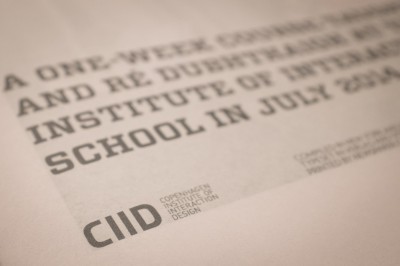

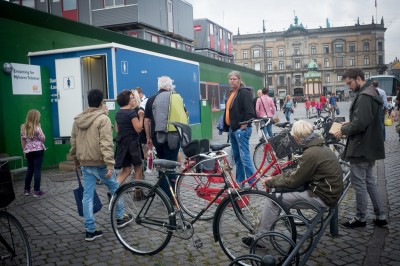



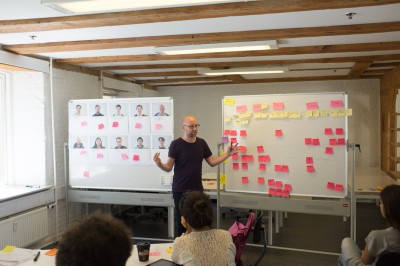
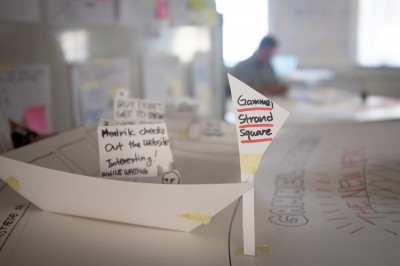

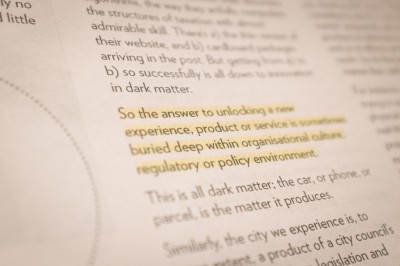

Comments are closed
Comments are currently closed on this entry.